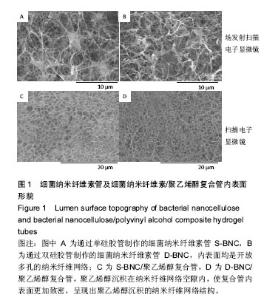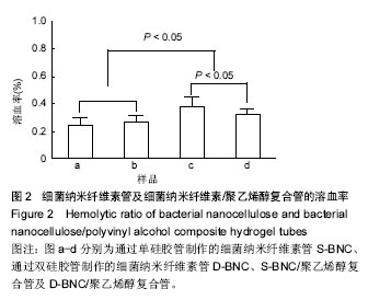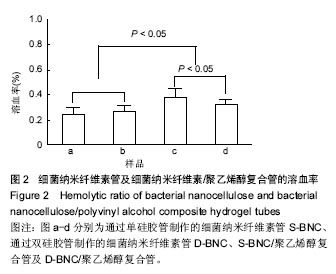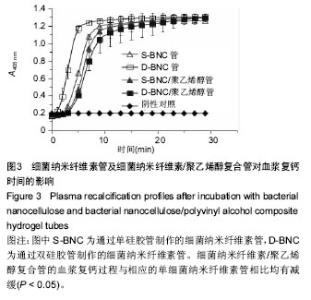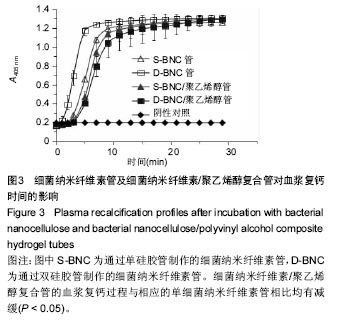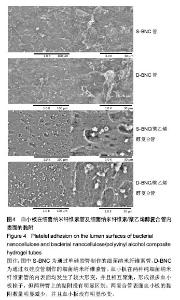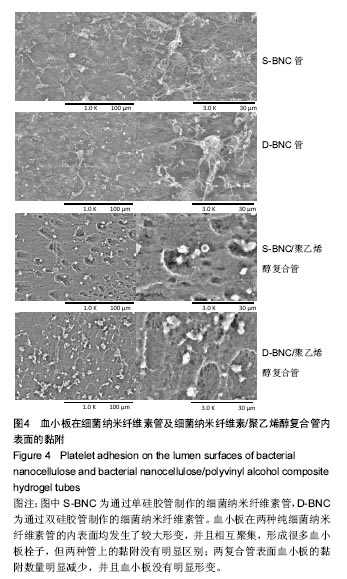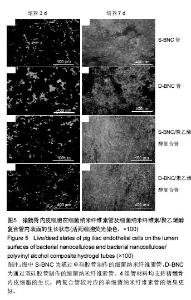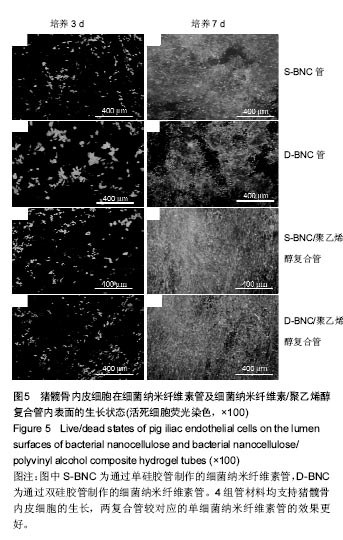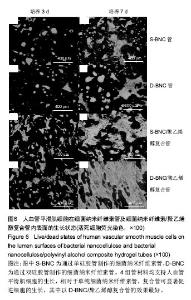| [1]Hess F.History of (micro) vascular surgery and the development of small-caliber blood vessel prostheses(with some notes on patency rates and re-endothelialization). Microsurgery.1985;6(2):59-69.[2]Isenberg BC,Williams C,Tranquillo RT.Small-diameter artificial arteries engineered in vitro. Circ Res.2006;98(1):25-35.[3]Klemm D,Kramer F,Moritz S,et al.Nanocelluloses: a new family of nature-based materials.Angew Chem Int Ed Engl. 2011;50(24):5438-5466.[4]Petersen N,Gatenholm P.Bacterial cellulose-based materials and medical devices: current state and perspectives.Appl Microbiol Biotechnol.2011;91(5):1277-1286.[5]Czaja W,Krystynowicz A,Bielecki S,et al.Microbial cellulose -the natural power to heal wounds. Biomaterials. 2006;27(2): 145-151.[6]Bäckdahl H,Helenius G,Bodin A,et al.Mechanical properties of bacterial cellulose and interactions with smooth muscle cells. Biomaterials.2006;27(9):2141-2149.[7]Wan YZ,Hong L,Jia SR,et al.Synthesis and characterization of hydroxyapatite–bacterial cellulose nanocomposites. Compos Sci Technol.2006;66(11-12):1825-1832.[8]Klemm D,Schumann D,Udhardt U,et al.Bacterial synthesized cellulose — artificial blood vessels for microsurgery.Prog Polym Sci.2001;26:1561-1603.[9]Bodin A,Bäckdahl H,Fink H,et al.Influence of cultivation conditions on mechanical and morphological properties of bacterial cellulose tubes.Biotechnol Bioeng. 2007;97(2):425-434.[10]Putra A,Kakugo A,Furukawa H,et al.Tubular bacterial cellulose gel with oriented fibrils on the curved surface.Polymer.2008; 49(7):1885-1891.[11]Scherner M,Reutter S,Klemm D,et al.In vivo application of tissue-engineered blood vessels of bacterial cellulose as small arterial substitutes: proof of concept?J Surgl Res.2012; 189(2): 340-347.[12]Bäckdahl H,Bo R,Gatenholm P.Observations on bacterial cellulose tube formation for application as vascular graft.Mater Sci Eng C.2011;31(1):14-21.[13]Hong F,Wei B,Chen L.Preliminary Study on biosynthesis of bacterial nanocellulose tubes in a novel double-silicone-tube bioreactor for potential vascular prosthesis.Biomed Res Int. 2015;2015:560365.[14]Millon LE,Mohammadi H,Wan WK.Anisotropic polyvinyl alcohol hydrogel for cardiovascular applications.J Biomed Mater Res B Appl Biomater.2006;79B(2):305-311.[15]Millon LE,Guhados G,Wan W.Anisotropic polyvinyl alcohol-Bacterial cellulose nanocomposite for biomedical applications.J Biomed Mater Res B Appl Biomater. 2008;86B(2): 444-452.[16]Cutiongco MFA,Goh SH,Aid-Launais R,et al.Planar and tubular patterning of micro and nano-topographies on poly(vinyl alcohol) hydrogel for improved endothelial cell responses. Biomaterials. 2016;84:184.[17]Gupta S,Greeshma T,Basu B,et al.Stiffness and wettability dependent myoblast cell compatibility of transparent poly(vinyl alcohol) hydrogels.J Biomed Mater Res B Appl Biomater.2013; 101(2):346-354. [18]Chaouat M,Visage CL,Baille WE,et al.A Novel Cross-linked Poly(vinyl alcohol) (PVA) for Vascular Grafts.Adv Funct Mater. 2008;18(19):2855-2861.[19]Leitão AF,Gupta S,Silva JP,et al.Hemocompatibility study of a bacterial cellulose/polyvinyl alcohol nanocomposite.Colloids Surf B Biointerfaces.2013;111:493-502. [20]Millon LE,Wan WK.The polyvinyl alcohol-bacterial cellulose system as a new nanocomposite for biomedical applications.J Biomed Mater Res B Appl Biomater.2006;79(2):245-253.[21]Tang J,Bao LH,Li X,et al.Potential of PVA-doped bacterial nano-cellulose tubular composites for artificial blood vessels.J Mater Chem B.2015;3(43):8537-8547.[22]Tang J,Li X,Bao LH,et al.Comparison of two types of bioreactors for synthesis of bacterial nanocellulose tubes as potential medical prostheses including artificial blood vessels.J Chem Technol Biotechnol.2017;92:1218-1228.[23]Dee KC,Puleo DA,Bizios S.An Introduction to Tissue-Biomaterial Interactions.John Wiley & Sons, 2002. |
